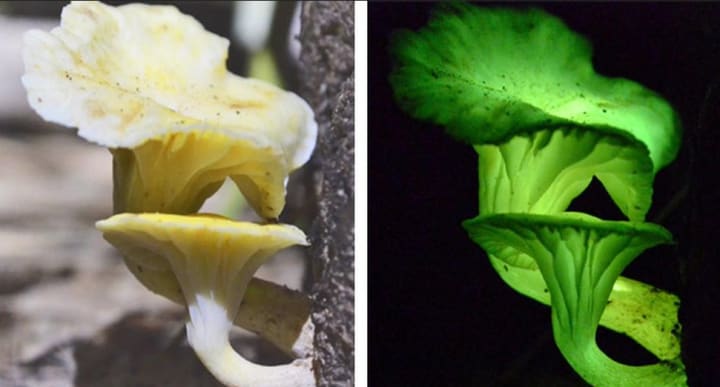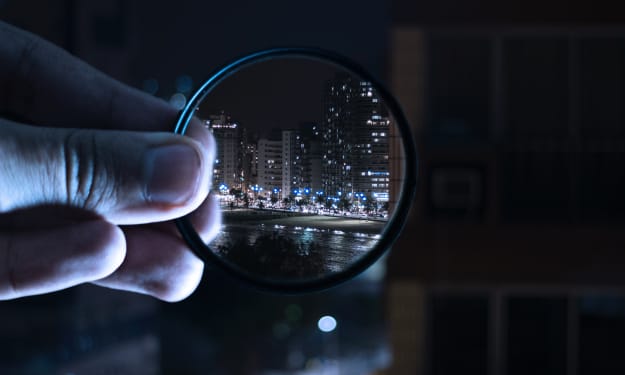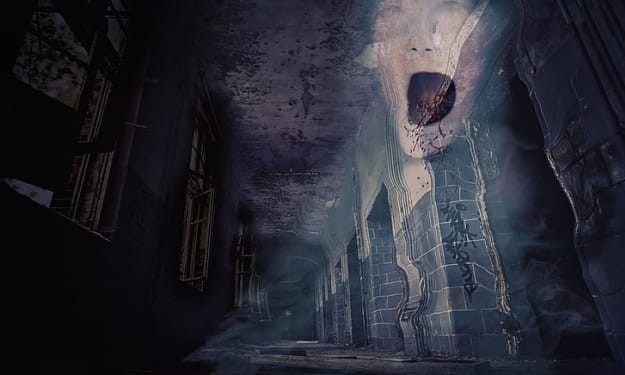Are You Afraid of the Forest at Night?
Unveiling the Enigmatic Glow: The Intriguing Secrets of Bioluminescent Mushrooms

Bioluminescent Mushrooms.

"They possess an ethereal beauty that can transport you to a dreamlike realm if you are unfamiliar with them: bioluminescent mushrooms. Among the staggering 100,000 known species of mushrooms, 71 of them have the extraordinary ability to emit an enchanting glow in the darkness. Surprisingly, the U.S. Navy once harnessed this natural phenomenon when artificial lighting was absent. In the year 1775, when the first combat submarine was constructed, navigating in the absence of light posed a challenge. To address this, engineers ingeniously utilized fragments of cork adorned with luminescent mushrooms to serve as luminescent markers on the submarine's depth gauge and clock.
However, until recently, the purpose behind the mushrooms' own luminescence remained a mystery. Was their glow merely a passive display? Remarkably, researchers have now discovered that these fungi are far from passive. Through meticulous observation using cameras, they have unveiled that some bioluminescent mushrooms possess an internal clock that regulates their light emission. During daylight hours, their glow diminishes, while it intensifies in the evening—a behavior reminiscent of the biological clocks that govern human rhythms.
The prevailing theory suggests that these fungi strategically adjust their luminescence to attract insects during the nighttime and early morning, when conditions are conducive for spore production. In these periods of higher humidity and cooler temperatures, the mushrooms release a greater quantity of spores, but rely on insects for effective dispersal as gentle breezes alone may fall short. Consequently, the radiant glow acts as a beacon, luring insects that become unwitting carriers of the mushrooms' reproductive spores throughout the forest.
The concept of bioluminescence itself is a fascinating phenomenon seen in various organisms across the natural world. From fireflies illuminating summer nights to deep-sea creatures emitting otherworldly glows in the ocean depths, nature seems to have found diverse applications for light production. However, understanding the specific purpose behind the luminescence in bioluminescent mushrooms remained an enigma until recent breakthroughs.
To shed light on this mystery, researchers embarked on an intricate study of these captivating fungi. Equipped with high-resolution cameras, they monitored bioluminescent mushrooms over an extended period, documenting their behavior and light emission patterns. What they observed was astonishing—a dynamic interplay between the mushrooms' internal clock and their luminescence.
During the daytime, when sunlight permeates the forest and renders their glow inconspicuous, the mushrooms reduce their luminescence to conserve energy. This adaptive response enables them to operate efficiently in their ecosystem, allocating resources judiciously. As the sun sets and darkness shrouds the forest, the mushrooms sense the changing conditions and gradually intensify their glow, creating a mesmerizing spectacle.
This synchronization between the mushrooms' internal clock and their luminescence serves a crucial ecological purpose. The optimal time for spore production coincides with the nighttime and early morning hours when humidity levels rise, providing an ideal environment for spore release. However, relying solely on passive spore dispersal mechanisms, such as air currents, may not guarantee efficient distribution throughout the forest. This is where the ingenious use of luminescence comes into play.
By emitting a soft, alluring glow, the mushrooms attract nocturnal insects that are naturally drawn to light sources. These unwitting insect visitors inadvertently collect spores on their bodies as they land on and explore the mushrooms. When the insects eventually take flight and continue their nocturnal journey, they unknowingly carry the spores with them, dispersing them to new locations in the forest. This mutually beneficial relationship between the bioluminescent mushrooms and insects ensures the successful propagation and genetic diversity of these extraordinary organisms.
The discovery of the internal clock mechanism in bioluminescent mushrooms adds a new dimension to our understanding of
Image Link: Pixabay
About the Creator
Edge Alexander
Captivating wordsmith, crafting transformative narratives that spark curiosity, ignite conversation, and leave an indelible mark.






Comments
There are no comments for this story
Be the first to respond and start the conversation.